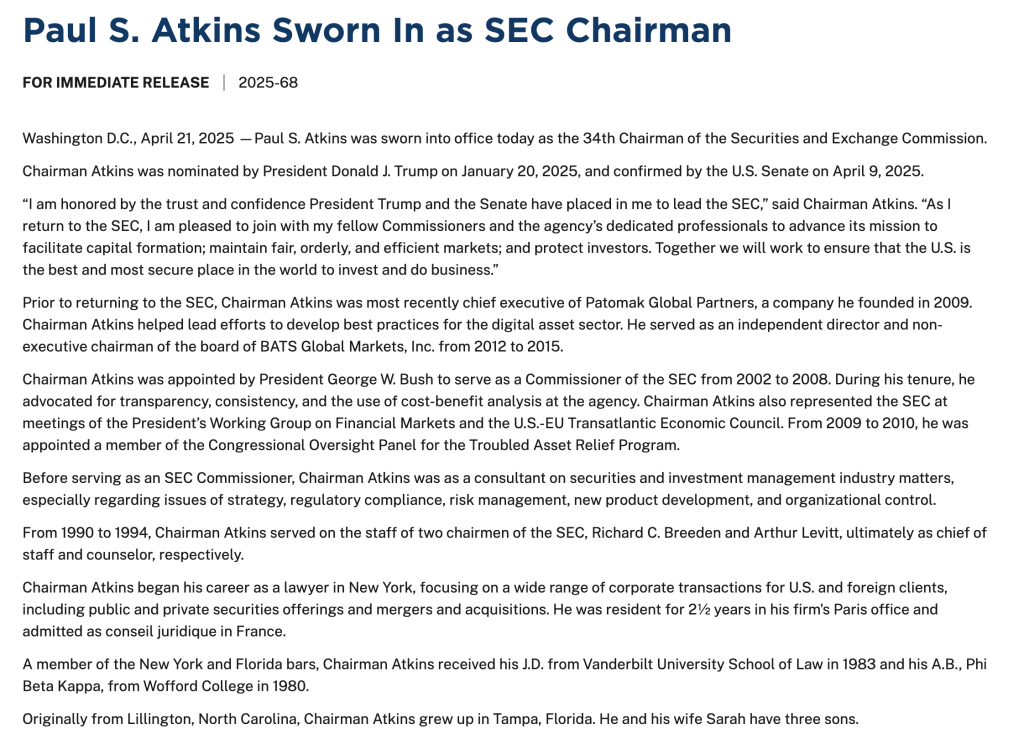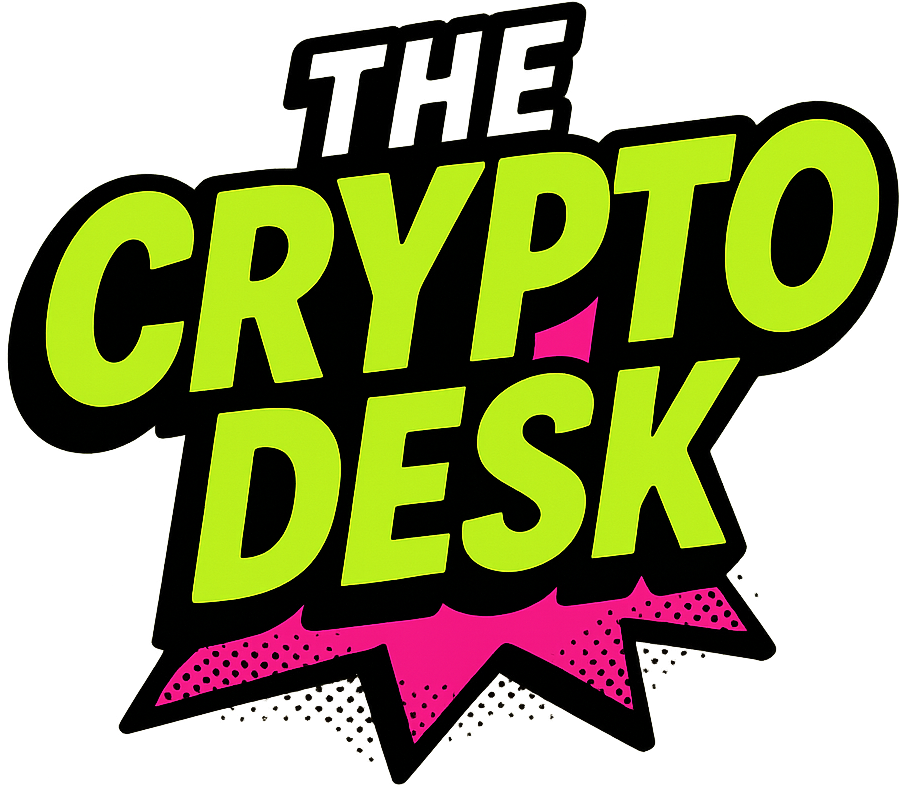New Era Begins: Paul Atkins Takes Helm of the SEC
A significant shift in the regulatory landscape has just occurred as Paul Atkins was officially sworn in as the Chairman of the U.S. Securities and Exchange Commission (SEC) this past Monday. This leadership transition, celebrated by many in the digital asset space, marks a promising chapter for the cryptocurrency industry.
Atkins, who was confirmed by the U.S. Senate on April 9 after being nominated by President Donald Trump late last year, expressed his gratitude, saying, “I am honored by the trust and confidence President Trump and the Senate have placed in me to lead the SEC.” He emphasized his commitment to collaborating with fellow commissioners and dedicated SEC staff to drive the agency’s mission forward—supporting capital formation, maintaining orderly markets, and protecting investors. A private swearing-in ceremony with President Trump at the Oval Office is set for Tuesday.

Why This Matters: A Timely Leadership Shift
Atkins’ return to the SEC is particularly noteworthy in a climate where the cryptocurrency industry has been yearning for clear and supportive regulatory guidance. After enduring a lengthy period characterized by strict enforcement actions under previous SEC leadership, many are viewing Atkins as a potential ally. His past tenure from 2002 to 2008 was marked by a philosophy that strongly advocated for market-driven regulation—an approach that resonates well with the innovation principles of the crypto ecosystem.
But what does this leadership change mean for the digital asset landscape? Many experts believe that Atkins’ appointment could serve as a catalyst for the regulatory clarity that the industry desperately needs. With a softer regulatory touch, Atkins might help foster an environment where innovation can thrive without stifling oversight.
Connections to Crypto: Atkins’ Financial Ties
Adding to the intrigue surrounding his confirmation, financial disclosures revealed that Atkins holds significant investments in the cryptocurrency sector—an investment portfolio valued at up to $6 million. This includes equity in prominent firms like Anchorage Digital and Securitize, as well as a limited partnership in Off the Chain Capital, a crypto-focused fund. His wealth, reportedly exceeding $580 million, is largely attributed to his consulting firm and his wife’s business ventures.
While some may critique his financial ties to the crypto industry, this exposure could mean that he genuinely understands the challenges and opportunities facing this evolving market. Industry participants are optimistic that his leadership will involve a more nuanced approach to cryptocurrency regulation, seeking clear and transparent rules regarding token classification and custody. This is crucial as businesses await guidelines that can help them innovate safely.
Expert Opinions: Insights from Industry Voices
Industry analysts have been quick to weigh in on Atkins’ potential impact. Crypto legal expert and commentator, Jane Doe, pointed out, “Atkins’ history suggests he will prioritize collaboration over confrontation, which could lead to quicker resolutions on key regulatory questions.” Other voices in the community have echoed similar sentiments, highlighting the hope that his leadership will rebalance the regulatory scales that seemed heavily tilted against innovation in the past.
As lawmakers in Washington grapple with the complexities of digital asset regulation, the divide among them continues to grow. Some advocate for rigorous consumer protections, while others support an innovation-friendly environment. Atkins’ stance may serve as a bridge between these competing interests.
Future Outlook: A New Dawn for Crypto Regulations?
Looking ahead, the optimism surrounding Atkins’ leadership is palpable. Many industry leaders anticipate that he will drive initiatives aimed at clarifying existing regulations around digital assets. Key issues like defining tokens, establishing custody rules, and ensuring consumer protection will likely be at the forefront of his agenda.
The stakes are high—both for the regulatory framework and the future growth of the cryptocurrency sector. Will the SEC under Atkins’ guidance lead to a thriving, innovation-friendly environment for digital assets? Only time will tell, but one thing is for sure: the crypto industry is watching closely, ready to adapt to new regulations as they emerge.
Conclusion: A Call for Community Engagement
As Paul Atkins steps into his role as SEC Chairman, the cryptocurrency landscape eagerly anticipates his next moves. Will he prioritize innovation, or will past regulatory rigor continue to dictate the approach? We encourage our readers to share their thoughts on this significant transition and discuss how such changes might impact the future of cryptocurrencies. Are you hopeful about a clearer regulatory framework, or do you think it will be business as usual?

